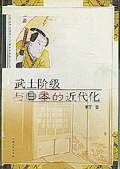Samurai Class and Japanese Modernization
Author: Li WenSilver Editor Source: Hebei People's Publishing HouseTime :2003-08-01 15:02:00

Author: Li WenSilver Editor Source: Hebei People's Publishing HouseTime :2003-08-01 15:02:00

The book consists of 3 parts. Part A, the Internal Organization, Social Status and Ideology of the Samurai Class in Tokugawa Era, discusses organizing factors and driving force that led to the success of modernization, including the unique political system, the difference of Japanese social system, Samurai’s social status and the formation of Samurai class' ideology.
Part B, Samurai Class and Meiji Reform, focuses on Samurai class's role in Meiji Reform, including the self readjustment of Samurai class' power organization, the range of political participation's enlargement from Samurai class to other classes, and Japanese transformation to civil society.
Part C, Samurai Class and the Start of Japanese modernization, focuses on how the Samurai class was transformed into capitalist class, who led the modernization and industrialization. It includes the formation and evolution of Samurai class and the leadership in Japanese modernization and industrialization, the role of industrialists, the former Samurai, in leading Japanese capitalism, and the major role of the intellectuals, the former Samurai, in renewing national ideology, promoting education revolution and modernizing science and technology.
Besides western countries, Japan is the first country that became industrial country. In nearly 50 years after Meiji came into office, Japan had economic, political, cultural, and racial advanced capital character. Even nowadays, scholars are positive on researching Japanese modernization. This book provides you with a new concept of realizing Japanese modernization.